Abstract
Following the emergence of two three-member equivalence classes (A1B1C1 and A2B2C2), 5 college students were exposed to one or more changes in the reinforcement contingencies controlling baseline conditional discriminations. AC relations were either reversed (i.e., C2 was reinforced and C1 punished when A1 was the sample; C1 was reinforced and C2 punished when A2 was the sample) or arranged randomly (i.e., C2 and C1 were reinforced and punished equally often in the presence of A1 and A2). In a third condition, the original AB and AC relations were reversed. Results showed that although baseline conditional discrimination performances were under the control of reinforcement contingencies, and performances on symmetry trials varied with baseline responding for 3 of 4 subjects when contingencies were reversed, performances on transitivity probes remained consistent with the initial equivalence class. These inconsistencies between probe and baseline performances were striking because conditional discriminations are thought to be the determinants of equivalence class performance. Similarly, the contrast between performances on symmetry and transitivity probes was of theoretical interest because equivalence classes are defined by congruent patterns of responding on probe trials.
Keywords: stimulus equivalence, stimulus classes, conditional discrimination, Wisconsin General Test Apparatus, object displacement, college students
Full text
PDF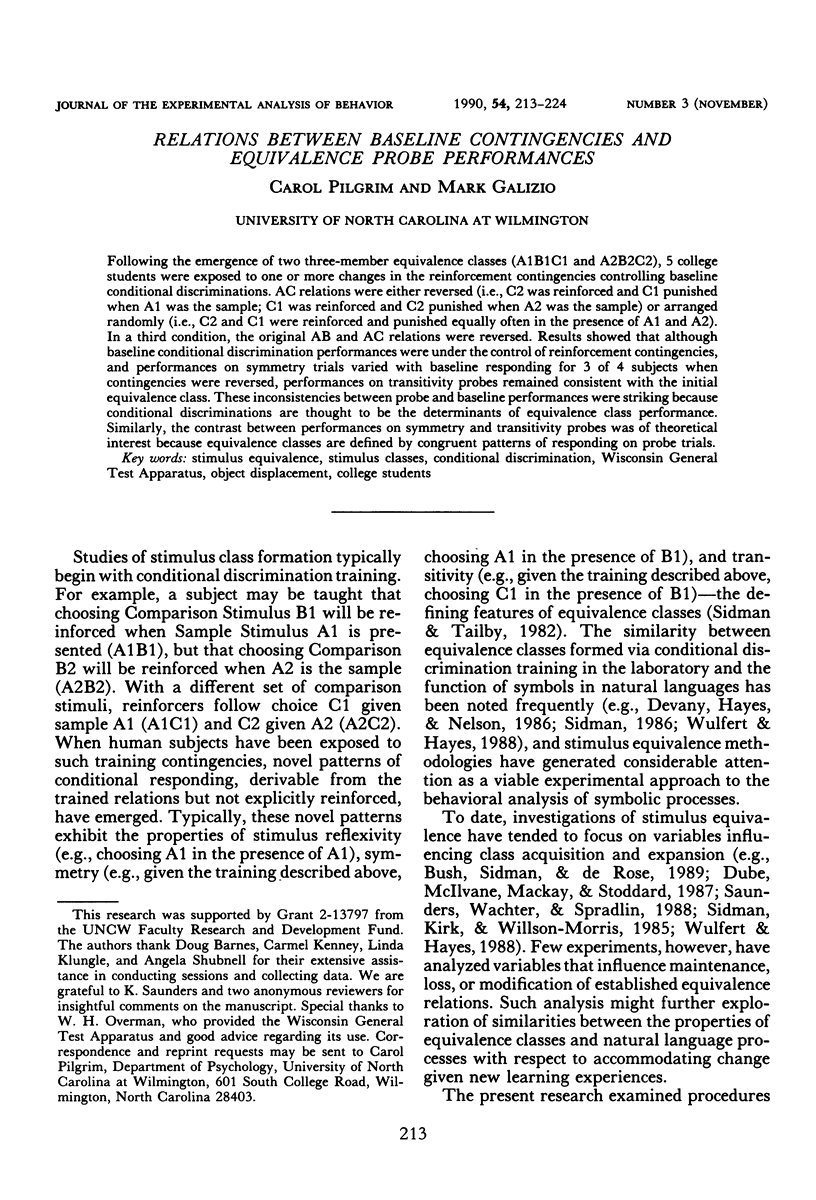
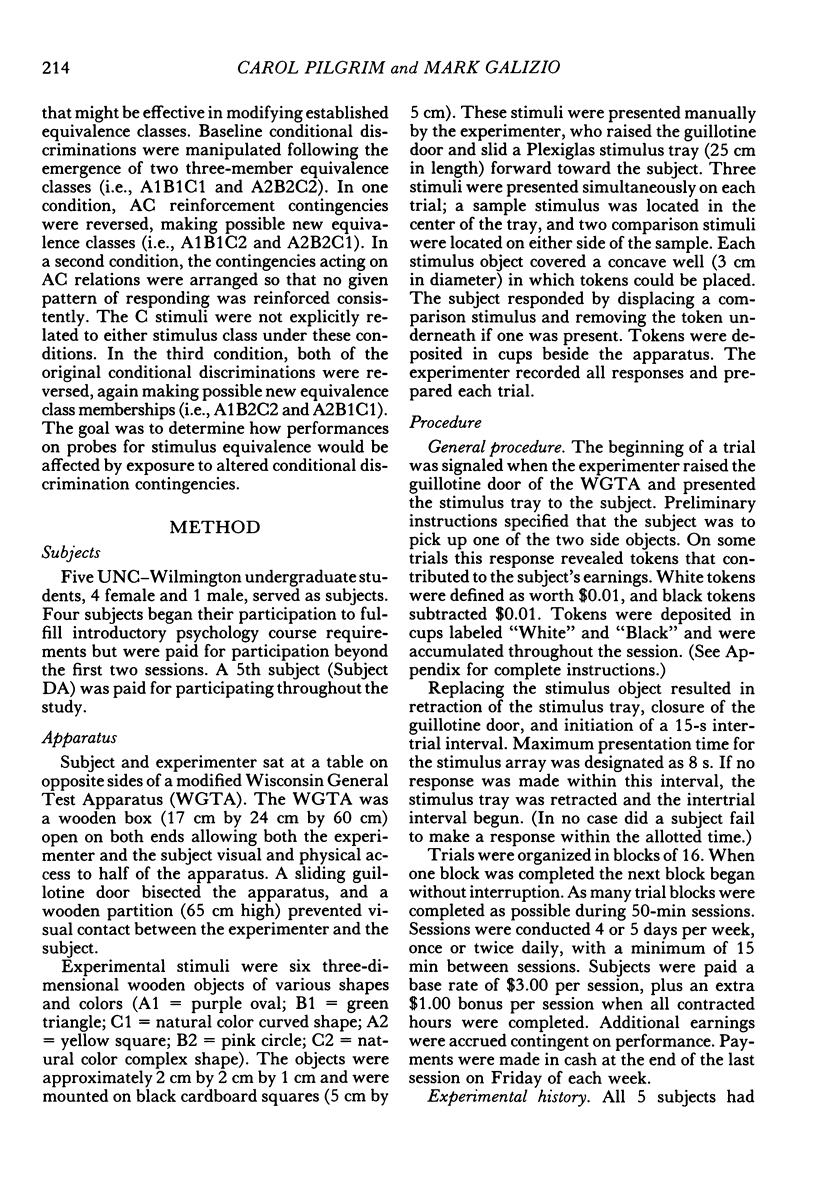
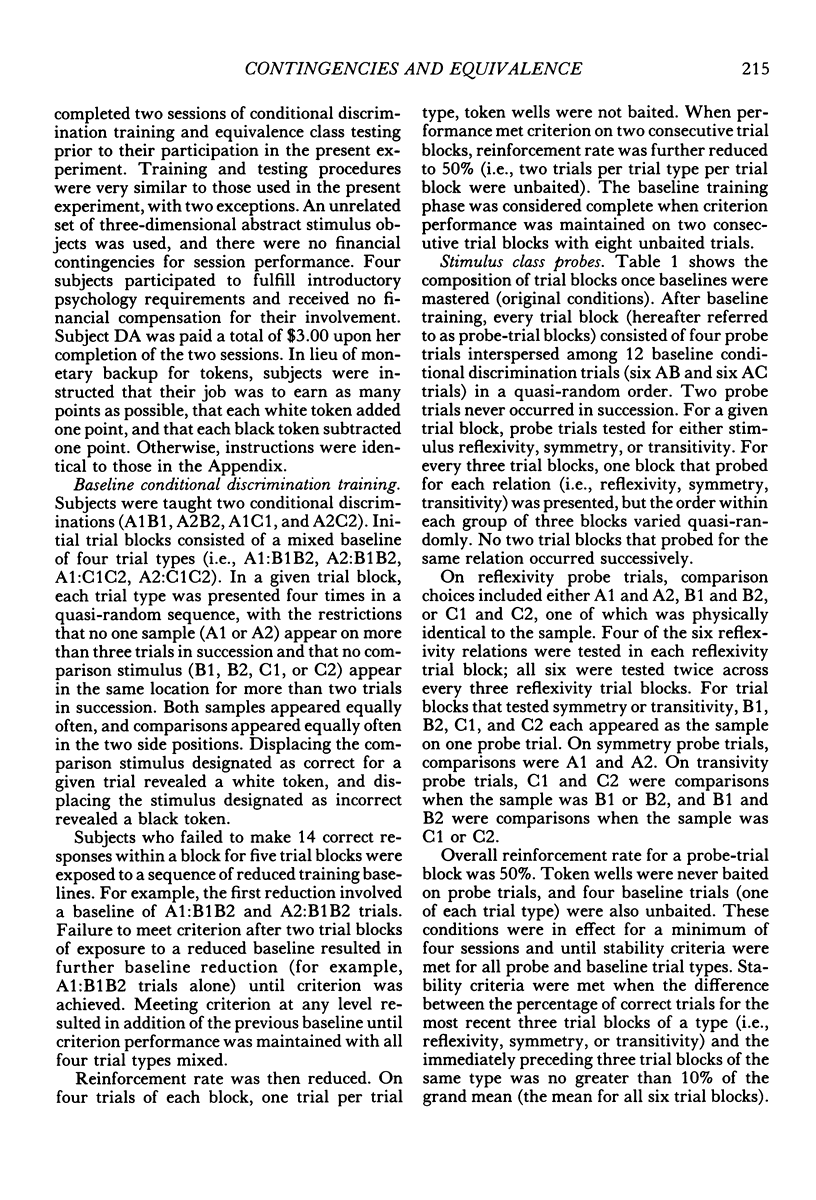
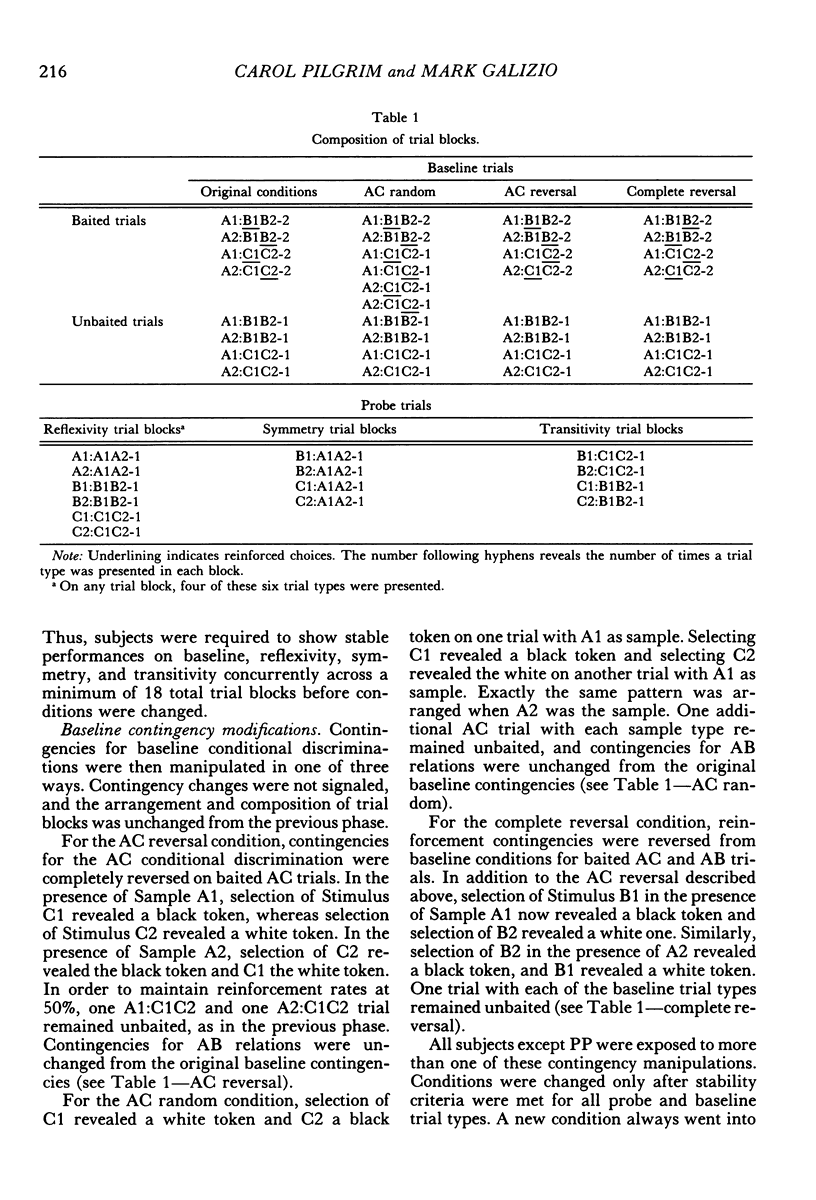
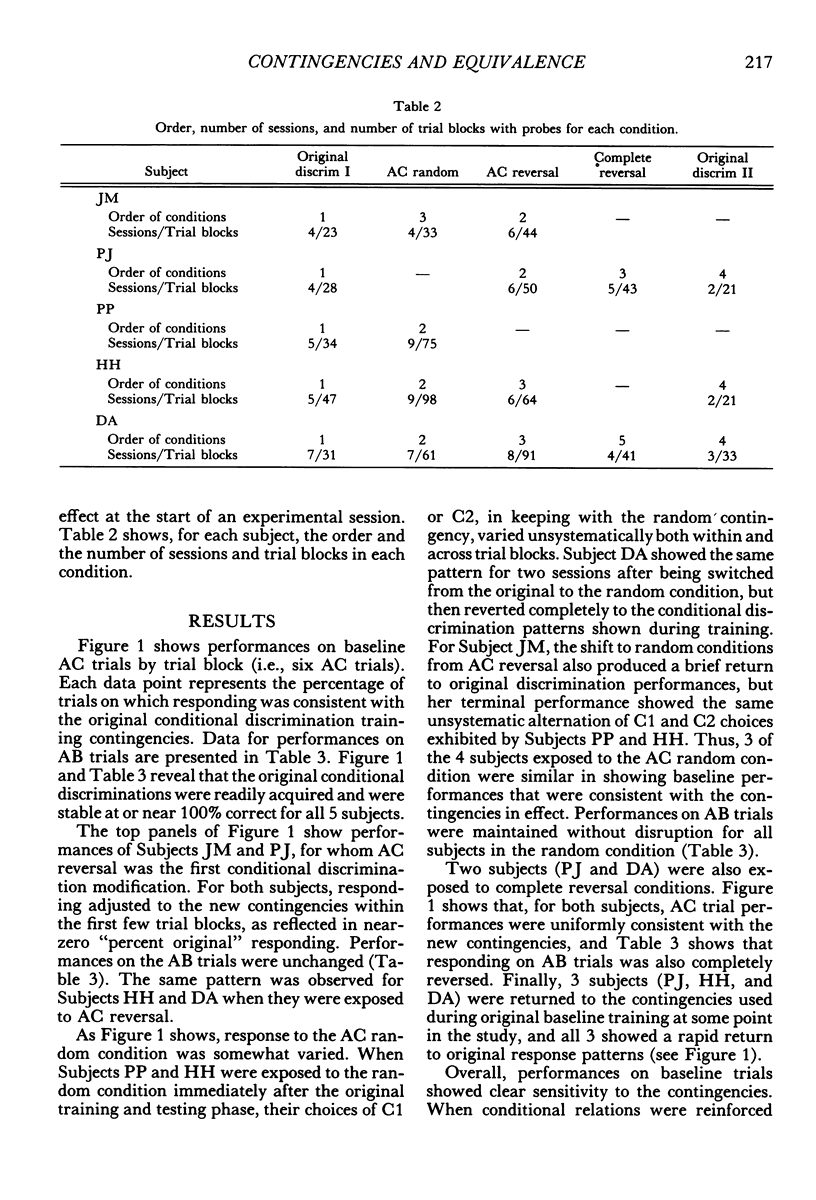
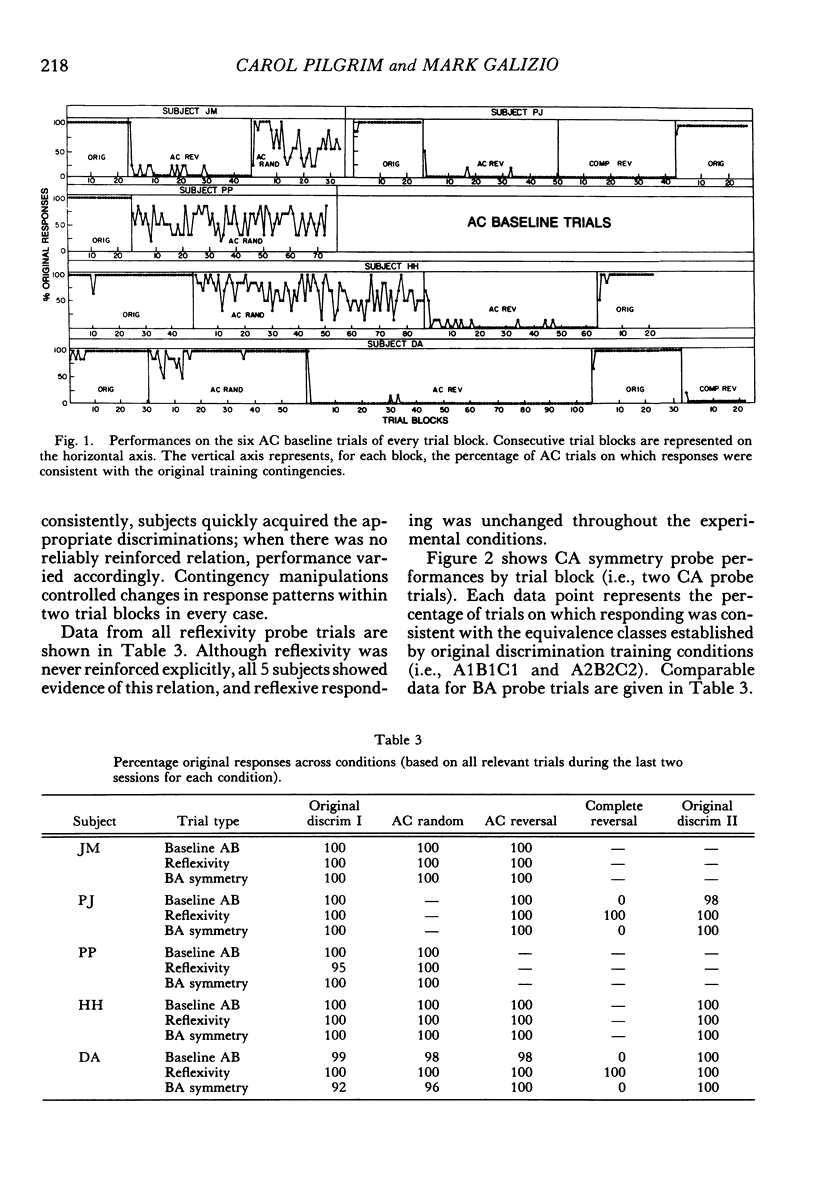
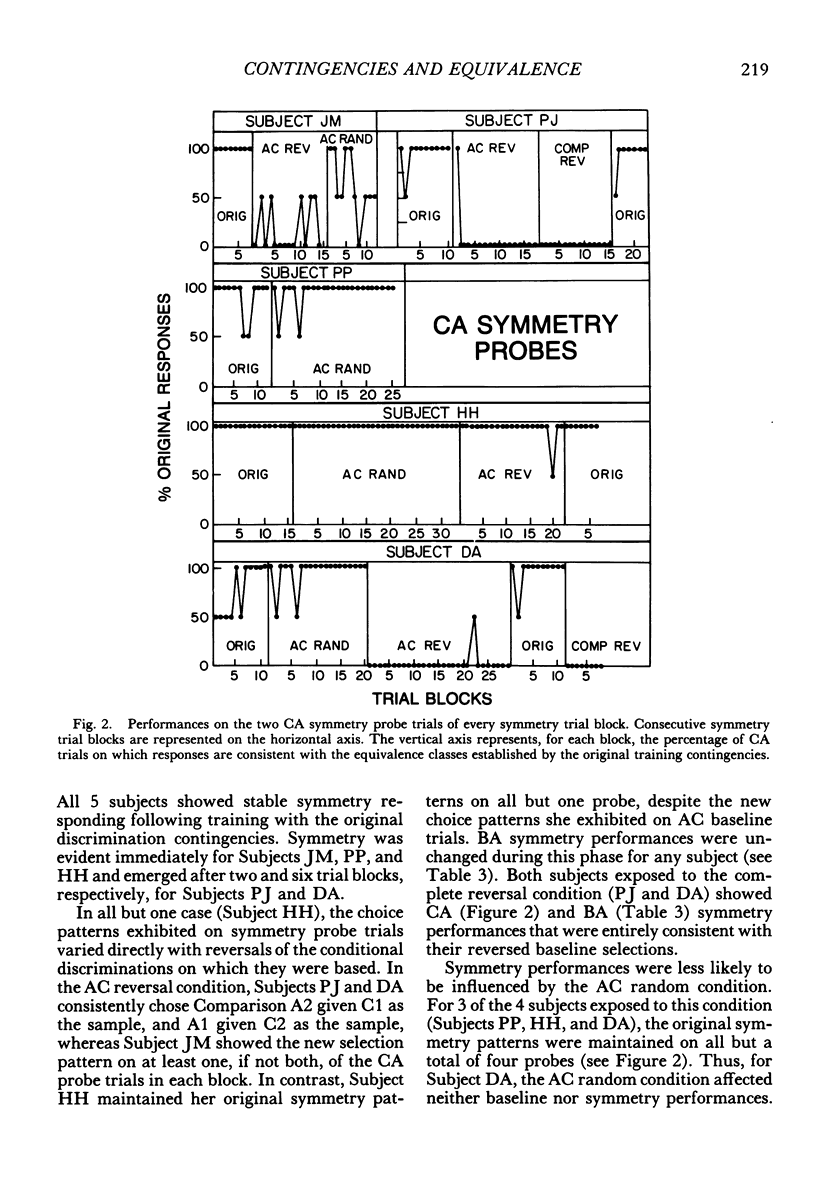
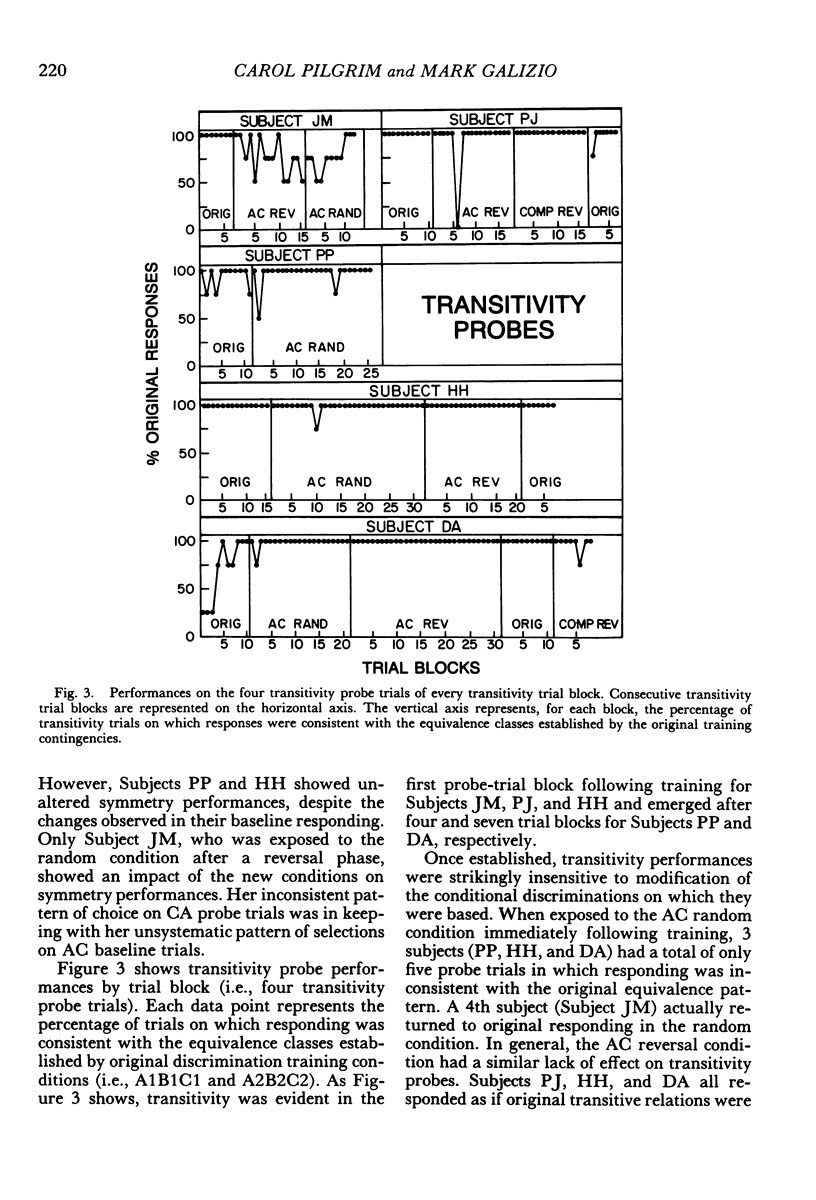
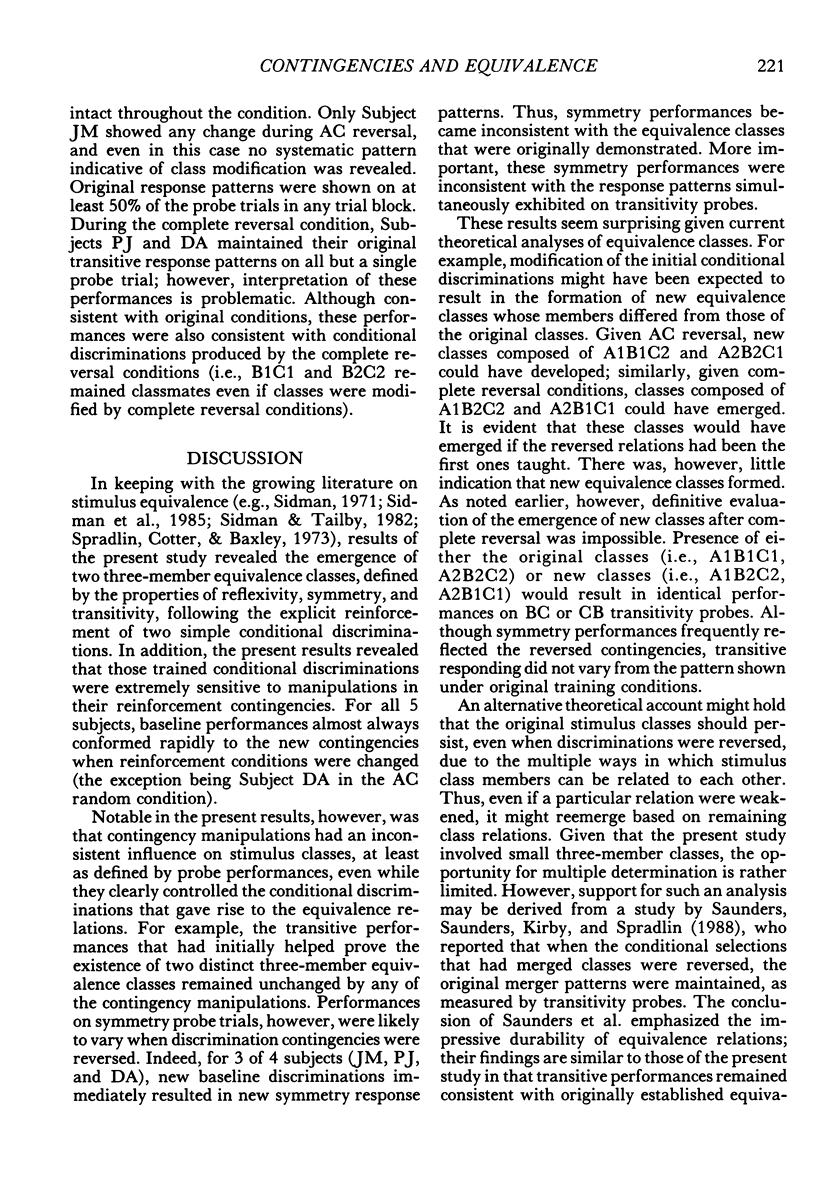
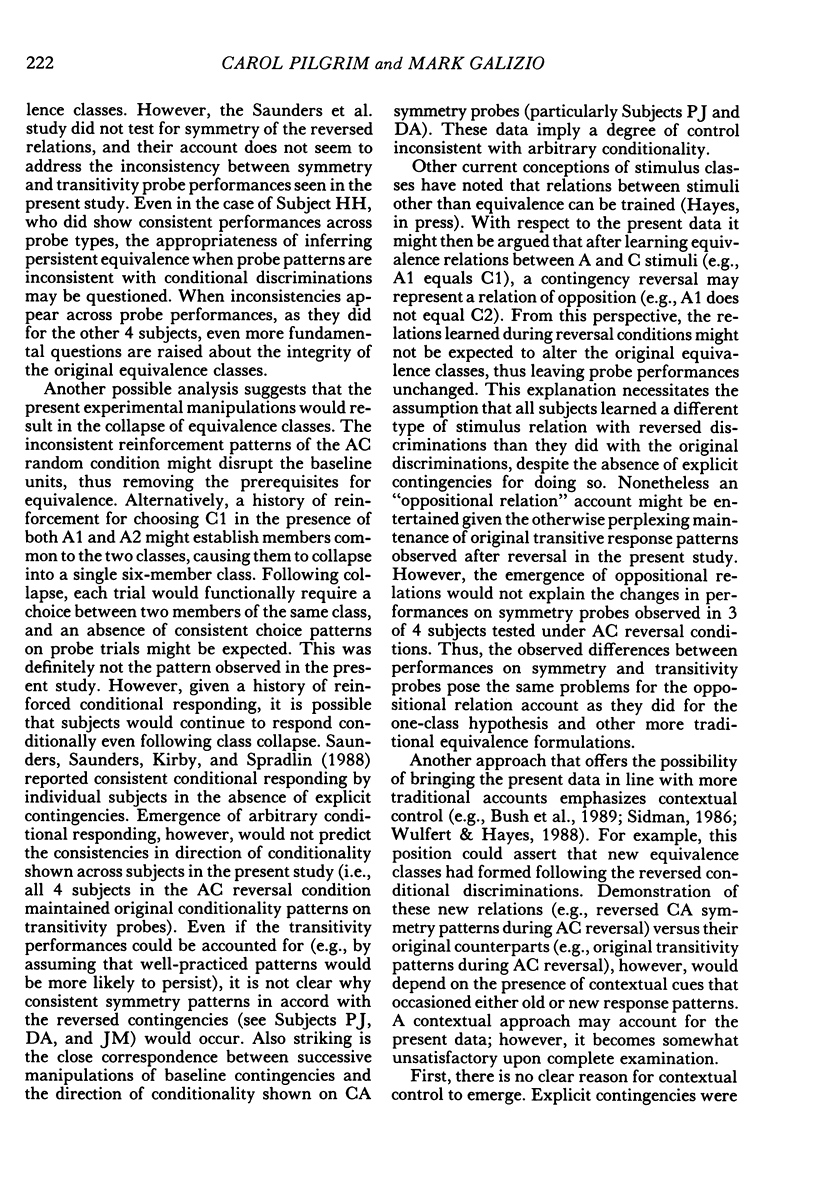
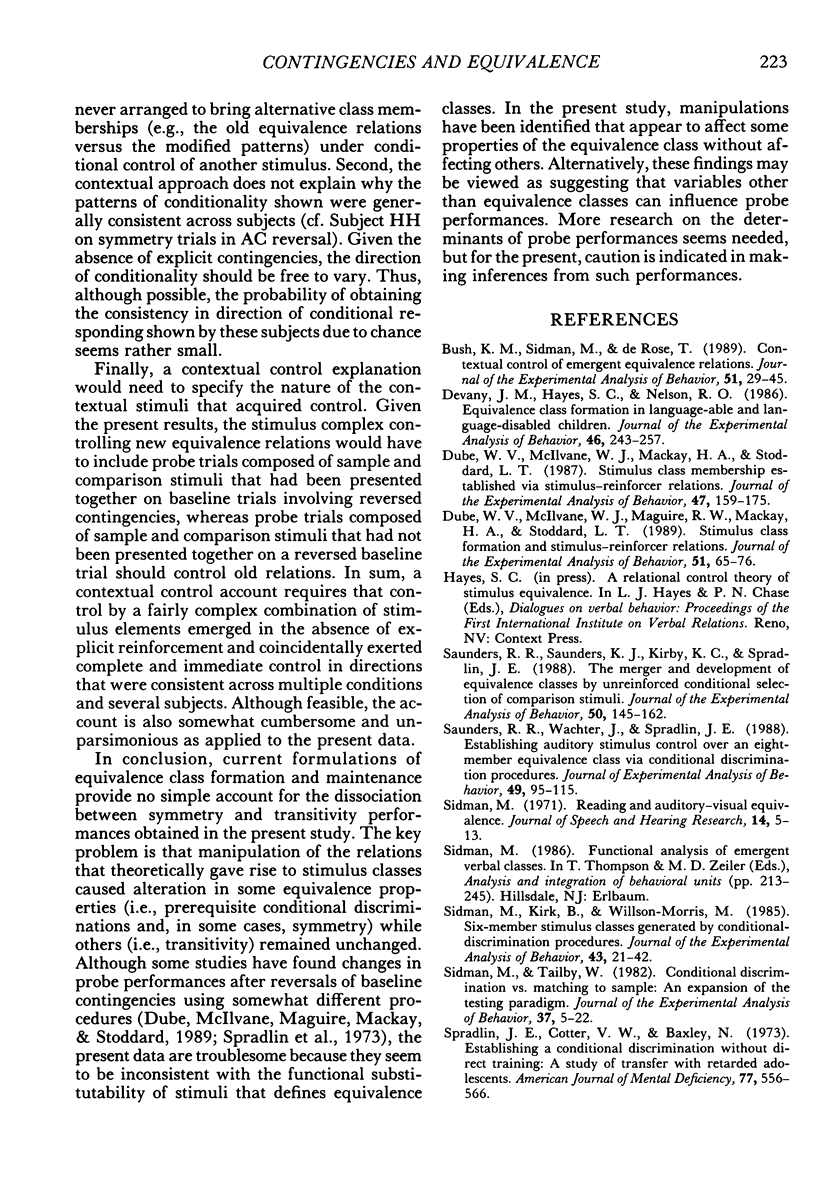
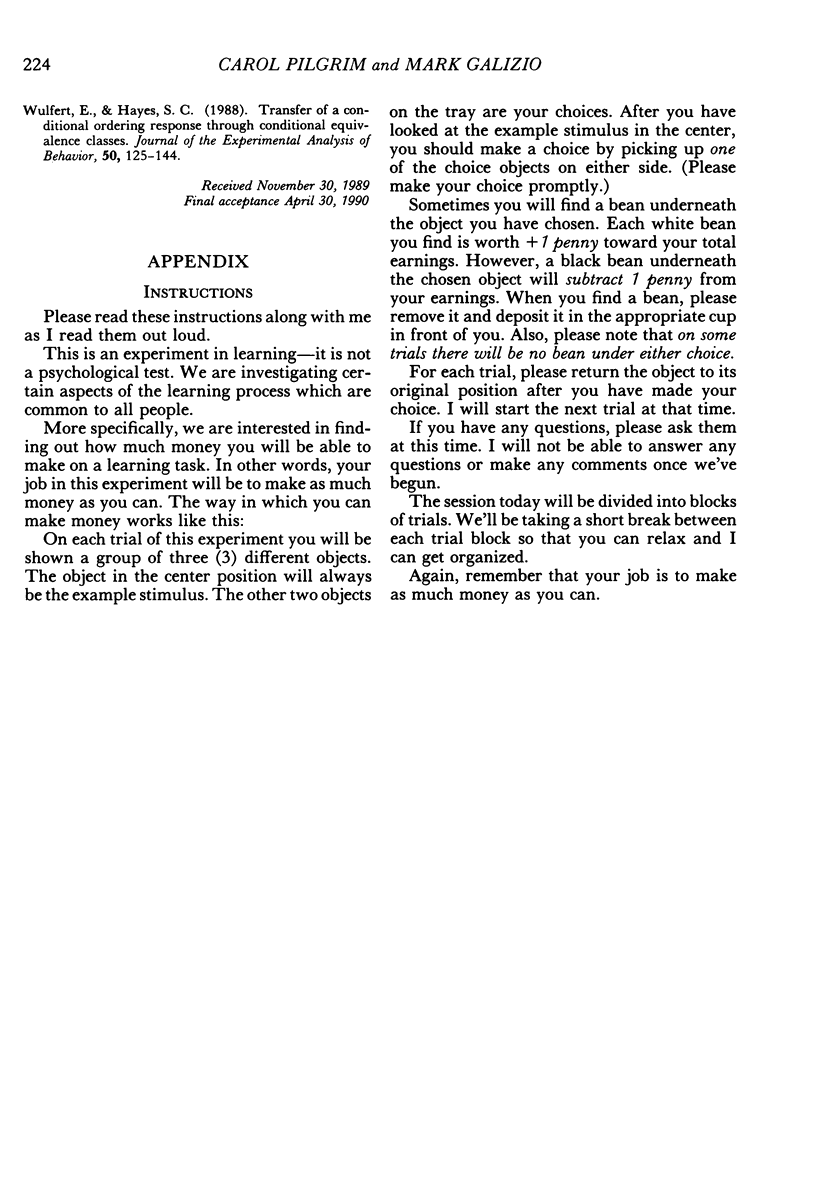
Selected References
These references are in PubMed. This may not be the complete list of references from this article.
- Bush K. M., Sidman M., de Rose T. Contextual control of emergent equivalence relations. J Exp Anal Behav. 1989 Jan;51(1):29–45. doi: 10.1901/jeab.1989.51-29. [DOI] [PMC free article] [PubMed] [Google Scholar]
- Devany J. M., Hayes S. C., Nelson R. O. Equivalence class formation in language-able and language-disabled children. J Exp Anal Behav. 1986 Nov;46(3):243–257. doi: 10.1901/jeab.1986.46-243. [DOI] [PMC free article] [PubMed] [Google Scholar]
- Dube W. V., McIlvane W. J., Mackay H. A., Stoddard L. T. Stimulus class membership established via stimulus-reinforcer relations. J Exp Anal Behav. 1987 Mar;47(2):159–175. doi: 10.1901/jeab.1987.47-159. [DOI] [PMC free article] [PubMed] [Google Scholar]
- Dube W. V., McIlvane W. J., Maguire R. W., Mackay H. A., Stoddard L. T. Stimulus class formation and stimulus-reinforcer relations. J Exp Anal Behav. 1989 Jan;51(1):65–76. doi: 10.1901/jeab.1989.51-65. [DOI] [PMC free article] [PubMed] [Google Scholar]
- Saunders R. R., Saunders K. J., Kirby K. C., Spradlin J. E. The merger and development of equivalence classes by unreinforced conditional selection of comparison stimuli. J Exp Anal Behav. 1988 Sep;50(2):145–162. doi: 10.1901/jeab.1988.50-145. [DOI] [PMC free article] [PubMed] [Google Scholar]
- Saunders R. R., Wachter J., Spradlin J. E. Establishing auditory stimulus control over an eight-member equivalence class via conditional discrimination procedures. J Exp Anal Behav. 1988 Jan;49(1):95–115. doi: 10.1901/jeab.1988.49-95. [DOI] [PMC free article] [PubMed] [Google Scholar]
- Sidman M., Kirk B., Willson-Morris M. Six-member stimulus classes generated by conditional-discrimination procedures. J Exp Anal Behav. 1985 Jan;43(1):21–42. doi: 10.1901/jeab.1985.43-21. [DOI] [PMC free article] [PubMed] [Google Scholar]
- Sidman M. Reading and auditory-visual equivalences. J Speech Hear Res. 1971 Mar;14(1):5–13. doi: 10.1044/jshr.1401.05. [DOI] [PubMed] [Google Scholar]
- Sidman M., Tailby W. Conditional discrimination vs. matching to sample: an expansion of the testing paradigm. J Exp Anal Behav. 1982 Jan;37(1):5–22. doi: 10.1901/jeab.1982.37-5. [DOI] [PMC free article] [PubMed] [Google Scholar]
- Spradlin J. E., Cotter V. W., Baxley N. Establishing a conditional discrimination without direct training: a study of transfer with retarded adolescents. Am J Ment Defic. 1973 Mar;77(5):556–566. [PubMed] [Google Scholar]
- Wulfert E., Hayes S. C. Transfer of a conditional ordering response through conditional equivalence classes. J Exp Anal Behav. 1988 Sep;50(2):125–144. doi: 10.1901/jeab.1988.50-125. [DOI] [PMC free article] [PubMed] [Google Scholar]


